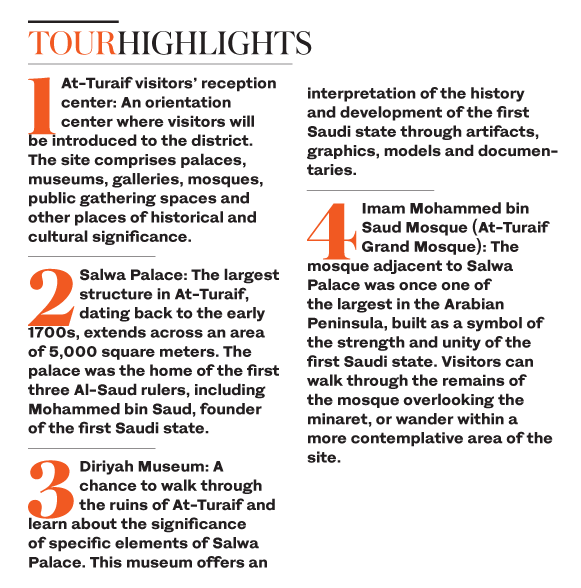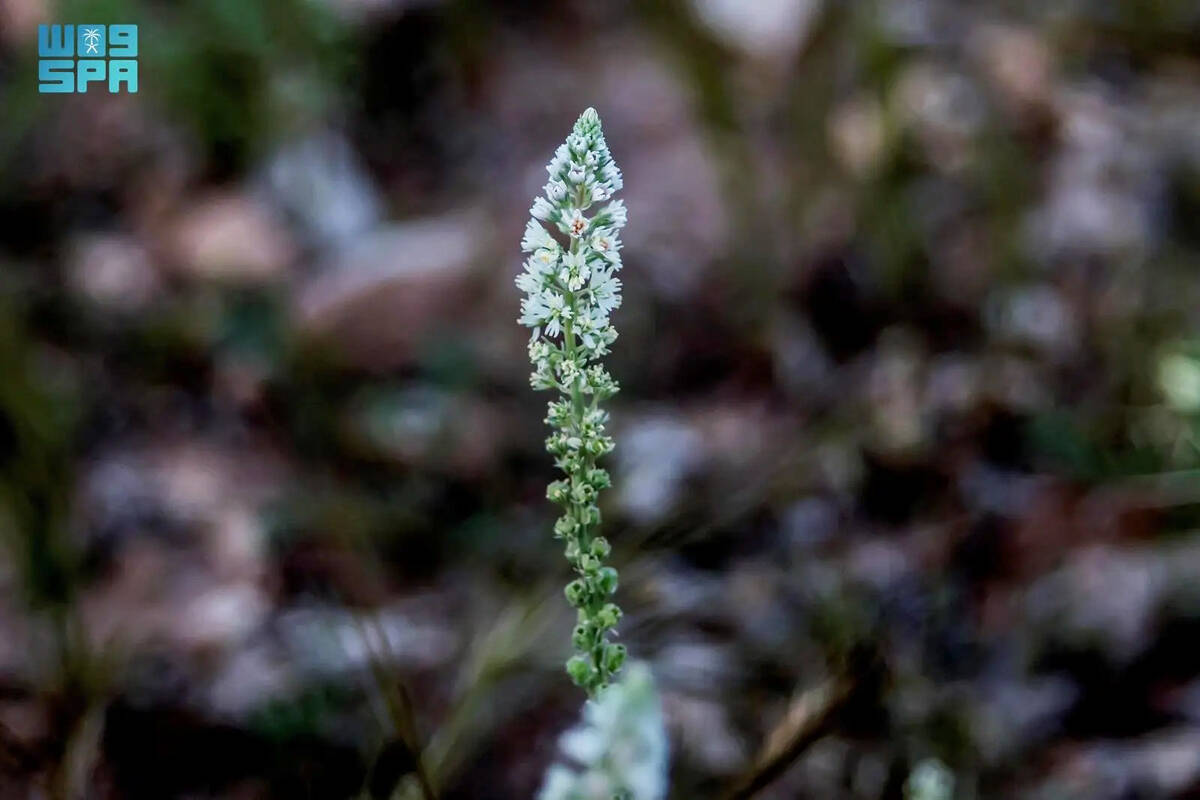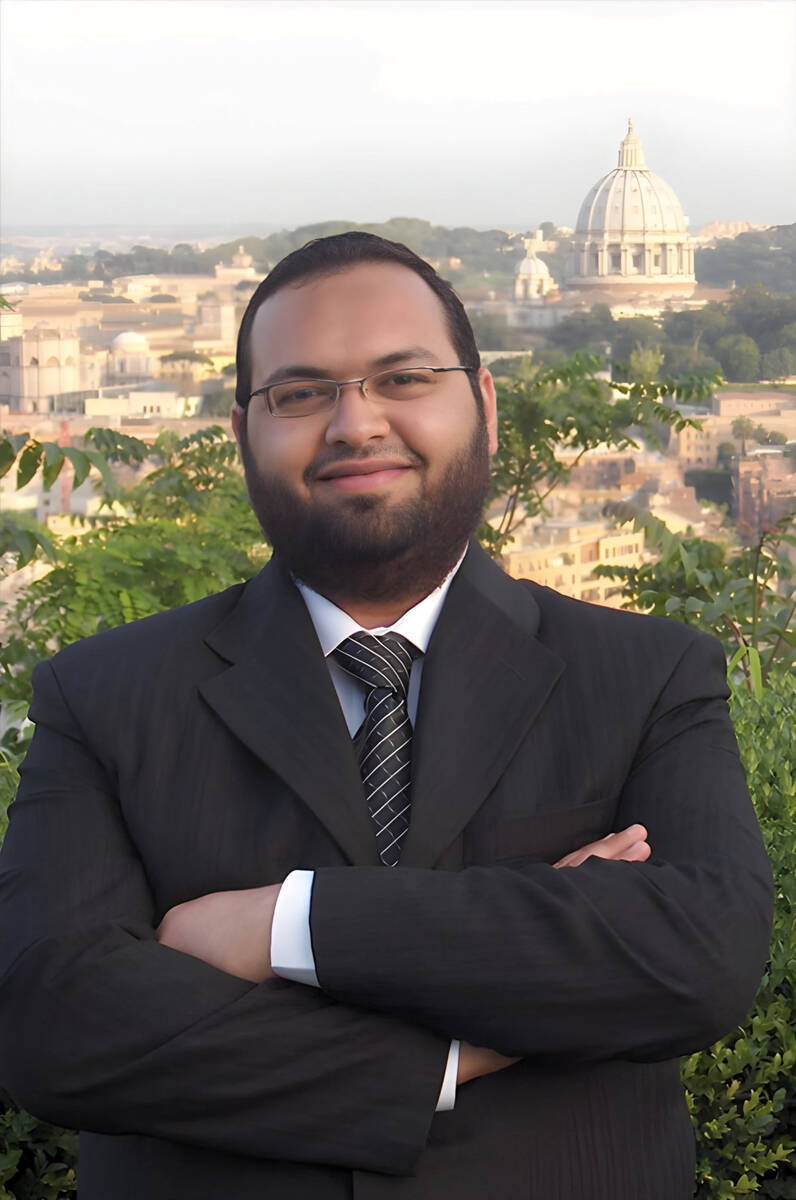RIYADH: As the world marks International Museum Day on Saturday, Saudi Arabia is getting one of its national treasures in Ad Diriyah ready for opening to the public at the beginning of 2020.
Arab News obtained a sneak peek at the historical gem, Salwa Palace — the original home of the Al-Saud royal family — located northwest of the capital Riyadh. Four museums will open their doors to the public alongside the newly restored Salwa Palace: Diriyah Museum, the Military Museum, the Arabian Horse Museum and the Saudi Daily Life Museum.
Ad Diriyah already has a number of open-air and indoor museums spread across the UNESCO World Heritage Site At-Turaif, plus a plan to build one of the world’s largest Islamic museums in the neighboring Al-Bujairi district.
The Diriyah Gate Development Authority (DGDA) is striving to turn Ad Diriyah into one of the region’s foremost destinations for historical and cultural knowledge-sharing activities.
“Ad Diriyah has a special place in the heart of all Saudis. The DGDA is working to transform Ad Diriyah into a globally renowned gathering place and a must-visit destination in the heart of the Kingdom,” DGDA CEO Jerry Inzerillo told Arab News.
“We’re committed to developing Diriyah Gate, starting with an extensive beautification project of the areas surrounding Ad Diriyah and At-Turaif, and creating spaces for families and communities to enjoy,” he said.
“This work has already begun, with thousands of square meters of green surfaces added to Ad Diriyah.”
The tour began at Salwa Palace. Extending over an area of at least 5,000 square meters, Salwa, which means solace or comfort in Arabic, is the largest single structure in Ad Diriyah, a city in Saudi Arabia’s central Najd region.
The palace consists of seven architectural units built in successive stages, starting from the time of Prince Muhammad bin Saud bin Muqrin, the founder of the first Saudi state in 1744.
The area abounds in palaces and mud houses of historical and cultural significance. The most prominent of them is Salwa Palace, where the affairs of the first Saudi state were conducted.
Among the other structures are Imam Mohammed bin Saud Mosque, Saad bin Saud Palace, Nasser bin Saud Palace, and a traditional hospitality palace. The neighborhood is enclosed by a large wall and towers that once served to protect the city.
Salwa Palace was built in distinctive Najdi architectural style. The walls have decorative triangular windows designed to recirculate air and bring natural light into the rooms. The materials used for construction were mud bricks, straw and logs of wood. The clay from which the bricks were made was extracted from underground soil layers.
At-Turaif and Al-Bujairi are connected to each other via the Sheikh Mohammed bin Abdul Wahab Bridge, a 75-meter-long curved structure built on the banks of Wadi Hanifa.
The bridge enables visitors to go directly from the premises of the Sheikh Mohammed bin Abdul Wahhab Foundation in Al-Bujairi to the reception center on Qu’a Al-Share’a street in At-Turaif, located next to Salwa Palace.
The palace housed administrative offices, councils of the imams of the first Saudi state, and ministers’ headquarters, which were connected to their stables.
We walked through the administrative department, which once teemed with officials and clerks dealing with important government matters.
Wood and thatch palm were chosen as the main building materials due to their strength and resistance to cracking. The wood was used in the construction of ceilings, doors and windows. Palm fronds were placed on top of the logs, preventing water from seeping into the mud, which would have caused the ceiling to weaken and ultimately collapse.
We entered a circular room called Al-Majles to watch a visual presentation featuring laser lighting. The presentation aims to enhance the visitor experience while sticking to UNESCO’s guidelines for preservation.
The laser show in each room tries to take visitors way back in time. In one room, the presentation depicted consultations with the imam on state affairs, as might have happened during the heyday of the first Saudi state.
Next to Al-Majles is an ante-room called Al-Mukhtasar, where only private issues were addressed.
Only the imam and one of his employees or councillors were permitted to enter this room to discuss and resolve an issue.
The concept of a private room has not faded with the passage of time, with an Al-Mukhtasar room still a feature of many government offices.
Salwa Palace also housed the first Saudi state’s treasury, which was responsible for the distribution of salaries and the collection of zakat.
As part of the restoration, the winding streets and walkways around the area’s open spaces have been paved in a style that emphasizes its historical importance.
During our tour, we stopped at the Salwa private school where members of the royal family used to take lessons in Islamic subjects, mathematics and the Holy Qur’an.
The tour guides of At-Turaif are Saudi men and women who have undergone months-long training to make them well versed in local history and familiar with every nook and cranny of the place.
They were ready with answers to every question we threw at them, and enlightened us with fascinating nuggets of history.
One of the guides recounted the story of the destruction of Ad Diriyah by an invading Ottoman force led by Ibrahim Pasha in 1818.
“It took him six months to destroy the place and the people in it, and make sure that no one survived,” she said, recalling the final tragic moments of the first Saudi state.
As our tour came to an end, we were directed toward an outdoor seating area with a clear view of Salwa Palace.
As if we were inside a movie theater, slowly the outer wall of the palace turned into a huge screen. On it was projected a short film that narrated the history of the monarchy from the establishment of the first Saudi state to the present time.
What the world will witness in 2020 in Ad Diriyah is the realization of an ambitious Vision 2030 dream, one that celebrates the triumphs and achievements of Saudi Arabia’s past while instilling in the present generation faith and confidence in the future.





































